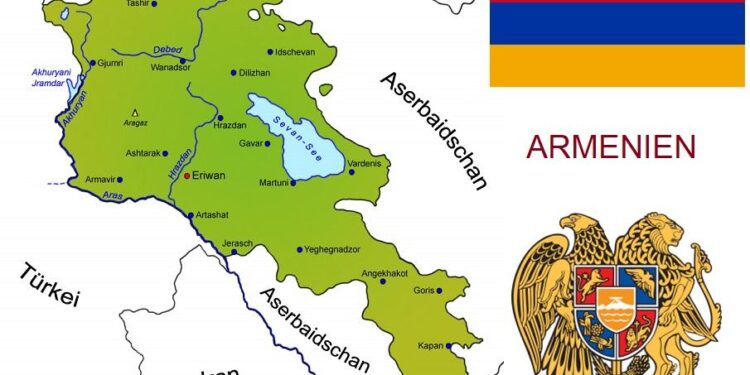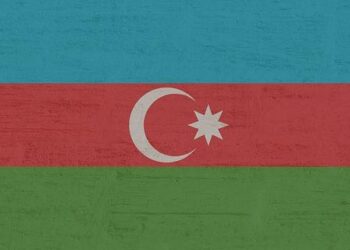Armenia and Azerbaijan, two neighboring countries with a history marked by decades of conflict over the Nagorno-Karabakh region, stand at a pivotal moment in their turbulent relationship. After years of intermittent clashes, ceasefire violations, and failed negotiations, recent diplomatic efforts signal a cautious yet hopeful turn towards lasting peace. As international actors intensify their calls for dialogue and reconciliation, the vision of humanity-emphasizing mutual respect, understanding, and coexistence-emerges as a guiding principle in resolving one of the most protracted conflicts in the post-Soviet space. This article explores the current state of Armenia-Azerbaijan relations and the prospects for sustainable peace in the region.
Historical Roots and Recent Developments Shaping the Armenia-Azerbaijan Conflict
The origins of the Armenia-Azerbaijan conflict trace back to the early 20th century, primarily centered around the region of Nagorno-Karabakh-a territory with a complex ethnic composition and competing historical claims. Following the collapse of the Russian Empire, both newly formed states laid claim to Nagorno-Karabakh, igniting tensions that escalated during the Soviet era. Despite Moscow’s efforts to administrate the region under Azerbaijani sovereignty while providing cultural autonomy to Armenians, dormant grievances persisted. The dissolution of the USSR in the late 1980s reignited these unresolved disputes, culminating in the brutal Nagorno-Karabakh War from 1988 to 1994. The conflict resulted in significant human casualties and displacement, leaving a frozen frontline and a fragile ceasefire that has been intermittently violated over the decades.
Recent developments have further shaped the dynamics of this protracted conflict. The 2020 Nagorno-Karabakh war marked a dramatic shift, with Azerbaijan regaining large swaths of territory previously controlled by Armenian forces. Diplomatic efforts have since been intensified, with international mediators promoting dialogue and ceasefire agreements. Key factors influencing current peace prospects include:
- Geopolitical interests of regional powers such as Russia, Turkey, and Iran.
- Economic investments aimed at rebuilding infrastructure and promoting cross-border cooperation.
- Humanitarian initiatives addressing displacement and fostering reconciliation.
| Year | Event | Outcome |
|---|---|---|
| 1994 | Ceasefire Agreement | End of large-scale conflict but unresolved status |
| 2020 | Six-Week War | Azerbaijan regains territories; new status quo |
| 2023 | Peace Talks Restart | Renewed diplomatic engagement |
Humanitarian Impact and the Urgent Need for Inclusive Dialogue
The enduring conflict has exacted a heavy toll on innocent civilians, displacing thousands and leaving communities fractured across borders. Access to essential services such as healthcare, education, and clean water remains critically limited for those caught in the crossfire. Women, children, and the elderly bear the brunt of these hardships, with many still living in dire refugee conditions. Without immediate and inclusive dialogue, the humanitarian crisis risks deepening, threatening generations to come with instability and suffering.
Meaningful progress hinges on the integration of diverse voices into peacebuilding efforts. This includes not only political leaders but also civil society, displaced populations, and grassroots organizations. Collaborative engagement must recognize:
- Ethnic and cultural diversity to foster mutual respect and understanding
- Gender perspectives ensuring both men and women shape the peace process
- Localized solutions adapting intervention to the unique needs of affected communities
| Key Stakeholders | Role in Dialogue | Impact |
|---|---|---|
| Political Leaders | Negotiation & Policy Decisions | Formal peace agreements |
| Civil Society | Advocacy & Awareness | Community trust-building |
| Displaced Communities | Sharing Lived Experience | Informed humanitarian aid |
| International Organizations | Facilitation & Funding | Resources for sustainable peace |
Pathways to Sustainable Peace Building and International Community Engagement
Long-term resolution of the Armenia-Azerbaijan conflict hinges on innovative approaches that transcend traditional diplomacy. Grassroots engagement, inclusive dialogue, and economic cooperation offer tangible avenues to build trust and dismantle decades of hostility. Equally vital is empowering local communities to take ownership of peace initiatives by facilitating cultural exchanges and joint educational programs. Such strategies not only humanize the opposing sides but also lay the groundwork for reconciliation rooted in shared experiences rather than political rhetoric.
International actors must recalibrate their roles from mere mediators to active partners in sustainable peacebuilding. This involves
- Supporting truth-telling mechanisms that address historical grievances with transparency.
- Facilitating multilateral development projects that connect economic welfare with stability.
- Ensuring balanced representation of both nations in peace forums to foster equitable dialogue.
Strengthening these pathways is critical for transforming uneasy ceasefires into durable peace accords, ultimately contributing to regional security and fostering a new era of cooperative international community engagement.
| Key Elements | Impact on Peacebuilding |
|---|---|
| Community-Led Dialogues | Build genuine trust at the grassroots level. |
| Economic Interdependence | Creates mutual incentives for peace. |
| International Mediation | Provides neutral platforms and expertise. |
| Cultural Exchange Programs | Promote empathy and break stereotypes. |
Final Thoughts
As Armenia and Azerbaijan stand at a critical juncture, the pursuit of lasting peace remains both a formidable challenge and an urgent necessity. The Vision of Humanity underscores the importance of sustained dialogue, mutual understanding, and international support to transcend decades of conflict. While obstacles persist, the recent steps toward reconciliation offer a cautious optimism that the region may finally embrace stability and coexistence. The world watches closely, hopeful that this longstanding dispute can evolve from a legacy of tension into a model of peace for future generations.
















